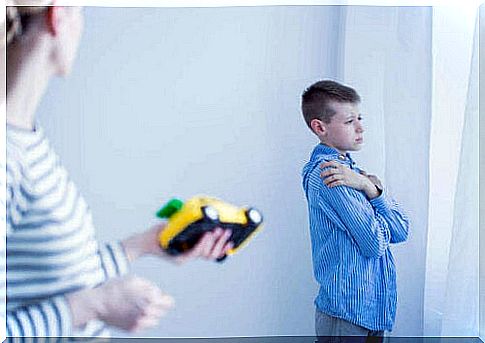What Is Selective Mutism And What Causes It?

Selective mutism is included in the DSM-5 Diagnostic and Statistical Manual of Mental Disorders. The definition is: “a child who usually has sufficient communication skills, but only communicates in a certain environment.”
The main characterization of this condition is that the child refuses to speak in certain environments or situations. For example, they may speak when they are around family, but they do not speak at school or with strangers.
Why is this happening? What causes a child to become silent in certain contexts and say nothing? In this article, you will learn some of the reasons why this problem can arise.
Selective Mutism in Children

Selective mutism is more common in boys than girls. It occurs at a young age and deserves special attention because it can lead to a lot of suffering.
A person who is afraid of spiders will run or scream if he or she sees a spider. Likewise, a child suffering from selective mutism cannot help but be silent. The reason is that selective mutism is probably related to fear. However, this is not entirely clear as there are very few cases.
Iván Carabaño, a pediatrician at the 12th of October University Hospital in Madrid, points out that selective mutism is a type of anxiety disorder that can be inherited. It can be compared to extreme shyness.
Mutism is only considered a condition if it persists for more than a month. According to Carabaño, mutism can sometimes still be present in adults, which can cause serious problems.
Mutism that extends into adulthood can create limitations and barriers at various levels such as meeting others and trying to get a job for example.
Factors that predispose children to it

Selective Mutism: A Guide to Detection, Evaluation and Early Intervention in School is a guide developed by the Behavioral Module of the Centro de Recursos de Educación Especial of Navarra (CREENA). This guide discusses some of the factors that can predispose a child to this condition:
- Personality Traits: Children are more prone to this condition if they are very shy or withdrawn.
- Learning disabilities: Some examples may include stuttering, some delay in language, speech, or lack of social skills.
- Family environment: If there is an avoidance situation at home and the parenting style of one or both parents is overprotective or authoritarian, then the child could develop selective mutism.
- School environment: An authoritarian or condescending teacher who favors unhealthy competition and sometimes embarrasses a child may also increase the child’s chances of developing selective mutism.
You should also always consider possible traumatic events that could lead to someone suffering from this condition. If you suspect that your child is suffering from it, you should see a specialist.
If a child is in a situation where he does not want to talk, you should never punish, scold or disbelieve the child. You must show understanding and treat your child with love. Encourage your child to interact with children they don’t know and help him strengthen his friendships.







